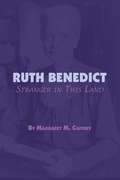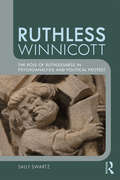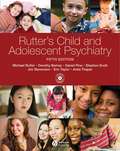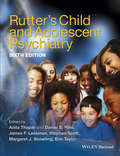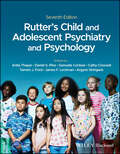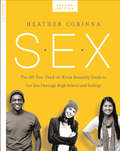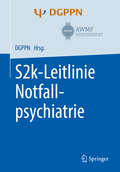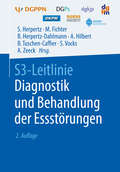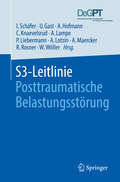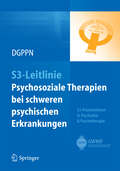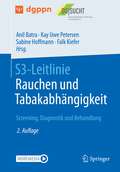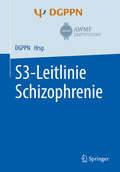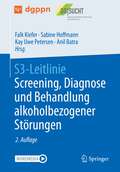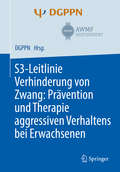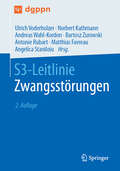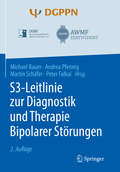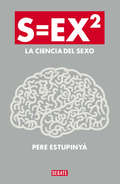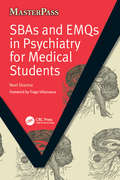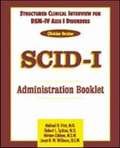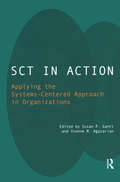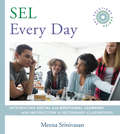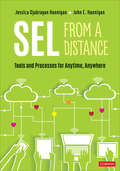- Table View
- List View
Ruth Benedict: A Humanist in Anthropology
by Margaret MeadMargaret Mead offers a deeply insightful portrait of a woman who overcame the barriers of sexism to become one of the most compelling intellectual figures in twentieth-century American life.
Ruth Benedict: Stranger in This Land
by Margaret M. CaffreyPoet, anthropologist, feminist--Ruth Fulton Benedict was all of these and much more. Born into the last years of the Victorian era, she came of age during the Progressive years and participated in inaugurating the modern era of American life. Ruth Benedict: Stranger in This Land provides an intellectual and cultural history of the first half of the twentieth century through the life of an important and remarkable woman. As a Lyricist poet, Ruth Benedict helped define Modernism. As an anthropologist, she wrote the classic Patterns of Culture and at one point was considered the foremost anthropologist in the United States--the first woman ever to attain such status. She was an intellectual and an artist living in a time when women were not encouraged to be either. In this fascinating study, Margaret Caffrey attempts to place Benedict in the cultural matrix of her time and successfully shows the way in which Benedict was a product of and reacted to the era in which she lived. Caffrey goes far beyond providing simple biographical material in this well-written interdisciplinary study. Based on exhaustive research, including access for the first time to the papers of Margaret Mead, Benedict's student and friend, Caffrey is able to put Benedict's life clearly in perspective. By identifying the family and educational influences that so sharply influenced Benedict's psychological makeup, the author also closely analyzes the currents of thought that were strong when Victorianism paralleled the Modernism that figured in Benedict's life work. The result is a richly detailed study of a gifted woman. This important work will be of interest to students of Modernism, poetry, and women's studies, as well as to anthropologists. Poet, anthropologist, feminist - Ruth Fulton Benedict was all of these and much more. Born into the last years of the Victorian era, she came of age during the Progressive years and participated in inaugurating the modern era of American life. Ruth Benedict: Stranger in This Land provides an intellectual and cultural history of the first half of the twentieth century through the life of an important and remarkable woman. As a Lyricist poet, Ruth Benedict helped define Modernism. As an anthropologist, she wrote the classic Patterns of Culture and at one point was considered the foremost anthropologist in the United States - the first woman ever to attain such status. She was an intellectual and an artist living in a time when women were not encouraged to be either. In this fascinating study, Margaret Caffrey attempts to place Benedict in the cultural matrix of her time and successfully shows the way in which Benedict was a product of and reacted to the era in which she lived. Caffrey goes far beyond providing simple biographical material in this well-written interdisciplinary study. Based on exhaustive research, including access for the first time to the papers of Margaret Mead, Benedict's student and friend, Caffrey is able to put Benedict's life clearly in perspective. By identifying the family and educational influences that so sharply influenced Benedict's psychological makeup, the author also closely analyzes the currents of thought that were strong when Victorianism paralleled the Modernism that figured in Benedict's life work. The result is a richly detailed study of a gifted woman. This important work will be of interest to students of Modernism, poetry, and women's studies, as well as to anthropologists.
Ruthless Winnicott: The role of ruthlessness in psychoanalysis and political protest
by Sally SwartzRuthless Winnicott is an extended exploration of the role of ruthlessness in psychic development. That survival is of no use unless it is preceded by a ruthless attack is one of D. W. Winnicott’s most resonant paradoxes. The book links this with the search for subjective freedom for those traumatized by colonialism, and in doing so draws on the work of Algerian psychiatrist and revolutionary psychoanalytic thinker Frantz Fanon. Sally Swartz examines essential pieces of Winnicott’s work on ruthlessness as central to the emergence of concern for the Other. She illustrates, with clinical examples, ways in which the ruthless use of the psychoanalytic psychotherapeutic space allows the patient either to enter fully into a process that allows growth, or to defend ruthlessly against the anxieties provoked by psychic change. Ruthless Winnicott also maps decolonial challenges to psychoanalytic theory, and the role of ruthlessness in protest movements demanding radical subjective change. Swartz’s exploration of ruthlessness as both zest and defense in individual development and in protest movements illuminates processes of psychological collision and change. It traces links between individual trauma and collective turbulence, and maps ways in which ruthlessness is essential to subjective change. Ruthless Winnicott will be of great interest to psychoanalysts and psychoanalytic psychotherapists, as well as scholars of colonialism, decolonization and post-colonialism.
Rutter's Child and Adolescent Psychiatry
by Jim S. Stevenson Daniel Pine Steven Scott Sir Michael Rutter Eric A. Taylor Anita Thapar Dorothy BishopRutter's Child and Adolescent Psychiatry has become an established and accepted textbook of child psychiatry. Now completely revised and updated, the fifth edition provides a coherent appraisal of the current state of the field to help trainee and practising clinicians in their daily work. It is distinctive in being both interdisciplinary and international, in its integration of science and clinical practice, and in its practical discussion of how researchers and practitioners need to think about conflicting or uncertain findings.This new edition now offers an entirely new section on conceptual approaches, and several new chapters, including:neurochemistry and basic pharmacologybrain imaginghealth economicspsychopathology in refugees and asylum seekersbipolar disorderattachment disordersstatistical methods for cliniciansThis leading textbook provides an accurate and comprehensive account of current knowledge, through the integration of empirical findings with clinical experience and practice, and is essential reading for professionals working in the field of child and adolescent mental health, and clinicians working in general practice and community pediatric settings.
Rutter's Child and Adolescent Psychiatry
by Stephen Scott Margaret J. Snowling Eric A. Taylor Anita Thapar Daniel S. Pine James F. LeckmanRutter's Child and Adolescent Psychiatry is the leading textbook in its field. Both interdisciplinary and international, it provides a coherent appraisal of the current state of the field to help researchers, trainees and practicing clinicians in their daily work. Integrating science and clinical practice, it is a comprehensive reference for all aspects of child and adolescent psychiatry. New to this full color edition are expanded coverage on classification, including the newly revised Diagnostic and Statistical Manual of Mental Disorders (DSM-5), and new chapters on systems neuroscience, relationship-based treatments, resilience, global psychiatry, and infant mental health. From an international team of expert editors and contributors, this sixth edition is essential reading for all professionals working and learning in the fields of child and adolescent mental health and developmental psychopathology as well as for clinicians working in primary care and pediatric settings. Michael Rutter has contributed a number of new chapters and a Foreword for this edition: "I greatly welcome this new edition as providing both a continuity with the past and a substantial new look."—Professor Sir Michael Rutter, extract from Foreword. Reviews of previous editions: "This book is by far the best textbook of Child & Adolescent Psychiatry written to date."—Dr Judith Rapoport, NIH "The editors and the authors are to be congratulated for providing us with such a high standard for a textbook on modern child psychiatry. I strongly recommend this book to every child psychiatrist who wants a reliable, up-to-date, comprehensive, informative and very useful textbook. To my mind this is the best book of its kind available today."—Journal of Child Psychology and Psychiatry
Rutter's Child and Adolescent Psychiatry and Psychology
by Anita Thapar Daniel S. Pine Cathy Creswell Argyris Stringaris James F. Leckman Samuele Cortese Tamsin J. FordUp-to-date edition of a leading textbook on child and adolescent psychiatry, with new information on COVID-19, digital technology and more Both interdisciplinary and international in scope, Rutter's Child and Adolescent Psychiatry delivers an expansive overview of the current state of the field, covering the latest research, advancements and technological developments. This Seventh Edition has undergone an extensive revision process, including a comprehensive review of chapter outlines and two stages of critical review for each full chapter by the editorial team. In this edition, each author provides short video clips to give a taste of their chapter along with instructor slides for teaching and training. New chapters cover changes in science and the needs of children around the world, global threats including COVID-19, wars, and natural disasters, care in low-resource settings, diversity in relation to gender and sexual orientation and body dysmorphic disorder, as well as digital technology, detailing the growing interest in digital approaches to assessment and intervention. . Written by a team of expert editors and contributors, Rutter's Child and Adolescent Psychiatry discusses sample topics including: Diagnosis, diagnostic formulations and classifications of developmental psychopathology, as well as neurodevelopmental disorders and emotion, emotional regulation and emotional disorders Child maltreatment and sexual abuse as well as influences on psychopathology, including genetics, epigenetics, psychosocial adversity, parental psychiatric disorders and physical treatment Available treatments including parenting programs, cognitive behavioural therapy, family interventions and relationship-based treatments Contexts of clinical encounters, including refugee and asylum-seeking children, children affected by HIV/AIDS and children with specific sensory impairments The Seventh Edition of Rutter's Child and Adolescent Psychiatry is an essential resource for all professionals working and learning in the fields of child and adolescent mental health and developmental psychopathology along with clinicians working in primary care and paediatric settings.
S.E.X., second edition: The All-You-Need-To-Know Sexuality Guide to Get You Through Your Teens and Twenties
by Heather CorinnaAs a teen or emerging adult, dealing with all the changes going on in your life, body, and mind can be mighty overwhelming. When it comes to sex, everyone seems to have strong feelings and opinions about who you should be and what you should (shouldn't) do. How do you decide who to listen to? Heather Corinna and Scarleteen have provided sex education and information to millions of young people, parents, and mentors since 1998; S.E.X tackles all the big topics:Self-image and how to find and claim your own sexual selfHow to best protect and support your sexual and emotional healthSorting out gender and sexual identities, even when they're complicated and confusingThe latest on contraceptive methods and other reproductive choices, sexually transmitted infections, and safer sexFinding, creating, and managing healthy and happy relationshipsHow to set and respect limits and boundaries, and rock consentIdentifying, preventing, or healing from abuse or assault...and much more.Whatever your gender or sexual identity, whether you've already been actively exploring your sexuality or are only just getting curious, S.E.X clearly spells out what you need and want to know-no shame, no judgement, just comprehensive and accurate info in a clear, straightforward language.
S2k-Leitlinie Notfallpsychiatrie
by Thomas Messer Frank-Gerald Pajonk Horst BerzewskiDer klinische Alltag zeigt, dass es nicht nur in der Psychiatrie, sondern in vielen medizinischen Disziplinen zu Notfallsituationen durch psychische Störungen kommt und deren Häufigkeit im Gefolge soziodemographischer, gesellschaftspolitischer und versorgungspolitischer Veränderungen wohl zunimmt. Diese Notfallsituationen sind oft komplex, potenziell lebensbedrohlich und führen durch vielfältige, für Anwesende und Helfer oft unverständliche Verhaltensstörungen der Patienten zu einem hohen Ausmaß an Verunsicherung hinsichtlich der zu treffenden Maßnahmen. Diese unter Federführung des Referats Notfallpsychiatrie der DGPPN interdisziplinär erarbeitete Leitlinie bietet erstmals im deutschen und wohl auch internationalen Sprachraum auf Leitlinienniveau - eine Übersicht über die notfallmedizinisch relevanten psychiatrischen Erkrankungen und Störungsbilder und - von verschiedenen Fachgesellschaften konsentierte Empfehlungen zur Behandlung und zum Management dieser Störungen nach systematischer Auswertung der vorliegenden klinischen Studien. Ziel dieser Leitlinie ist eine qualitative Verbesserung in der prästationären und stationären Versorgung psychiatrischer Notfallpatienten.
S3-Leitlinie - Diagnostik und Therapie bipolarer Störungen
by Michael BauerLeitlinien dienen dazu, Versorgungsfragen zu formulieren, das umfangreiche Wissen dazu zusammenzutragen und kritisch zu bewerten, gegensätzliche Standpunkte zu klären und das derzeitige Vorgehen der Wahl zu definieren. Sie sollen Patienten, Angehörige und Therapeuten bei der Entscheidung über angemessene Maßnahmen der Krankenversorgung unter spezifischen medizinischen Umständen unterstützen. Die vorliegende Leitlinie setzt dieses Ziel für die bipolaren Störungen um.
S3-Leitlinie Diagnostik und Behandlung der Essstörungen
by Stephan Herpertz Silja Vocks Almut Zeeck Manfred Fichter Beate Herpertz-Dahlmann Anja Hilbert Brunna Tuschen-CaffierDieses Buch enthält die gemeinsame S3-Leitlinie „Diagnostik und Therapie der Essstörungen“ in der aktualisierten Version von Februar 2018, die von zahlreichen Fachgesellschaften unter der Federführung der Deutschen Gesellschaft für Psychosomatische Medizin und Psychotherapie (DGPM) erarbeitet wurde. Die thematische Gliederung entspricht der Erstauflage weitgehend und umfasst die Kapitel Epidemiologie, Diagnostik, therapeutische Beziehung, Anorexia nervosa, Bulimia nervosa, Binge Eating-Störung, körperliche Folgeerkrankungen und methodisches Vorgehen. In Anlehnung an das DSM-5 kommen nun zwei neue Essstörungskategorien hinzu: Die „anderen näher bezeichneten Fütter- oder Essstörungen“ (OSFED), zu der auch das „Night Eating Syndrome“ gehört und die „Störung mit Vermeidung oder Einschränkung der Nahrungsaufnahme“ (ARFID), die die alte Kategorie der „nicht näher bezeichneten Essstörungen“ (EDNOS) ersetzt. Die S3-Leitlinie „Diagnostik und Therapie der Essstörungen“ wendet sich an alle Berufsgruppen, die Patienten mit Essstörungen betreuen. Auch im Hinblick auf die überarbeitete und aktualisierte Ausgabe der S3-Leitlinie würde sich die Arbeitsgruppe freuen, mit diesen Leitlinien zu einer Verbesserung der Versorgung von betroffenen Menschen mit Essstörungen beizutragen.
S3-Leitlinie Posttraumatische Belastungsstörung
by Andreas Maercker Ingo Schäfer Annett Lotzin Ursula Gast Arne Hofmann Christine Knaevelsrud Astrid Lampe Peter Liebermann Rita Rosner Wolfgang WöllerDie S3-Leitlinie „Posttraumatische Belastungsstörung“ (PTBS) wurde in ihrer aktualisierten Version von 2019 von zahlreichen Fachgesellschaften unter der Federführung der Deutschsprachigen Gesellschaft für Psychotraumatologie (DeGPT) erarbeitet. Sie enthält gegenüber der Vorversion verschiedene Neuerungen: Aufgrund der Einführung der Diagnose „Komplexe PTBS“ in ICD-11 widmet sich ein neues Kapitel der Behandlung dieser Störung. Auch den neuen Befunden zur Behandlung der PTBS bei Betroffenen mit anderen psychischen Diagnosen wird in einem eigenen Kapitel Rechnung getragen. Darüber hinaus wurde ein eigener Teil der Leitlinie zur „Diagnostik und Behandlung der Posttraumatischen Belastungsstörung bei Kindern- und Jugendlichen“ aufgenommen, der auf spezifische Fragestellungen bei der Behandlung von Kindern und Jugendlichen eingeht. Die S3-Leitlinie „Posttraumatische Belastungsstörung“ ist damit noch umfassender geworden und gibt allen Berufsgruppen Empfehlungen an die Hand, die in die Betreuung von Patienten mit Posttraumatischen Belastungsstörungen eingebunden sind.
S3-Leitlinie Psychosoziale Therapien bei schweren psychischen Erkrankungen
by Peter Falkai Dgppn Dt. GesellschaftDie Leitlinie zeichnet sich durch einen diagnoseübergreifenden Ansatz für die Behandlung von Menschen mit schweren psychischen Störungen aus. Diese Patienten leiden hauptsächlich an den Auswirkungen einer schweren und längerfristigen psychischen Erkrankung. Für die Leitlinie wurden die Empfehlungen der Deutschen Gesellschaft für Psychiatrie, Psychotherapie und Nervenheilkunde (DGPPN) berücksichtigt.
S3-Leitlinie Rauchen und Tabakabhängigkeit: Screening, Diagnostik und Behandlung
by Anil Batra Kay Uwe Petersen Falk Kiefer Sabine HoffmannDieses Buch enthält die 2021 aktualisiert veröffentlichte Fassung der S3-Leitlinie „Rauchen und Tabakabhängigkeit: Screening, Diagnostik und Behandlung“.Die aktualisierte Leitlinie gibt detaillierte Behandlungsempfehlungen und Therapieleitlinien für die Motivation und Behandlung von Rauchern zur Beendigung des Tabakkonsums. Die Leitlinie ist nach intensiven Literaturrecherchen und Abstimmungsprozessen der beteiligten Fachgesellschaften auf dem aktuellsten Stand, insbesondere die Empfehlungen aus dem Bereich des Screenings, der Psychotherapie und Pharmakotherapie wurden überarbeitet.Die Leitlinie wurde von renommierten Herausgebern und Autoren verfasst und ist die Grundlage für alle Ärztinnen und Ärzte, Therapeutinnen und Therapeuten in der Suchtmedizin.
S3-Leitlinie Schizophrenie
by Wolfgang Gaebel Peter Falkai Alkomiet HasanDie vorliegende, vollständig überarbeitete S3-Leitlinie Schizophrenie beinhaltet eine systematische Zusammenstellung der verfügbaren Evidenz zum diagnostischen Vorgehen, zur Therapie und Versorgung von Menschen mit einer Schizophrenie. Die erarbeiteten 162 Schlüsselempfehlungen und acht Statements sind das Ergebnis eines umfassenden strukturierten Konsensprozesses. Die neue S3-Leitlinie Schizophrenie ist nicht nur eine aktualisierte Version der früheren S2- und S3-Versionen der DGPPN-Leitlinien, sondern sie umfasst auch viele neue Elemente. Entscheidend ist dabei für alle Phasen und Aspekte des Versorgungsprozesses das multiprofessionelle und multimodale Vorgehen bei durchgehend empathisch-wertschätzender therapeutischer Haltung.
S3-Leitlinie Screening, Diagnose und Behandlung alkoholbezogener Störungen
by Anil Batra Kay Uwe Petersen Falk Kiefer Sabine HoffmannDas Buch liefert – unter Einbeziehung der Erkenntnisse aus der aktuellen Forschung – detaillierte Leitlinien zur Früherkennung von Alkoholproblemen und zur optimalen Behandlung von betroffenen Personen. Für die 2020 aktualisierte Auflage wurden alle Kapitel hinsichtlich neuer Forschungsergebnisse und aktueller Literatur überprüft und die Empfehlungen überarbeitet.Die Empfehlungen richten sich an ÄrztInnen und PsychologInnen in Klinik und Praxis, an Mitarbeitende in Reha-Einrichtungen und Beratungsstellen, sowie an Betroffene und deren Angehörige. Die Leitlinie bildet die Grundlage für eine evidenzbasierte Behandlung und soll einen leichteren Zugang zum umfangreichen Hilfesystem ermöglichen. Die wichtigsten Inhalte auf einen Blick:Empfehlungen zu Screening, Case Finding und Diagnostik von alkoholbezogenen StörungenBehandlungsempfehlungen für Personen mit alkoholbezogenen Störungen in im akuten und postakuten SettingEmpfehlungen für verschiedene Gruppen der GesellschaftBesonderer Fokus auf die deutsche Versorgungslandschaft
S3-Leitlinie Verhinderung von Zwang: Prävention und Therapie aggressiven Verhaltens bei Erwachsenen
by Tilman Steinert Sophie HirschDie vorliegende S3-Leitlinie ist eine Querschnittsleitlinie, die für die Behandlung aller Arten von psychischen Störungen Relevanz haben kann. Sie beinhaltet eine Übersicht über die verfügbare Evidenz zur Behandlung aggressiven Verhaltens bei psychischen Erkrankungen und zur Verhinderung von Zwang in diesem Zusammenhang mit Empfehlungen, die von einem starken Konsens getragen sind. Die enthaltenen Themen sind häufig Gegenstand von Kontroversen zwischen den unterschiedlichen Akteuren in der psychiatrischen Versorgung, weshalb diese Leitlinie von einer interdisziplinären Expertengruppe erarbeitet wurde. Sie richtet sich an alle an der psychiatrischen Versorgung der Bevölkerung beteiligten Berufsgruppen: Psychiater, Psychologen, Psychotherapeuten in Wissenschaft und Praxis, Sozialarbeiter, Pflegepersonal, Juristen sowie Entscheidungsträger in Politik und Managementfunktionen im Gesundheitsbereich.
S3-Leitlinie Zwangsstörungen
by Ulrich VoderholzerDie erste Revision der S3-Leitlinie zur Behandlung von Zwangsstörungen bei Erwachsenen wurde wieder unter Beratung und Moderation durch die Arbeitsgemeinschaft der wissenschaftlichen medizinischen Fachgesellschaft (AWMF) von einem großen Gremium an wissenschaftlichen Experten und Vertretern von Fachverbänden erstellt. Die Empfehlungen der revidierten Fassung basieren auf einer Sichtung der Evidenz der verfügbaren randomisierten klinischen Studien zu Zwangsstörungen sowie der Meta-Analysen dazu, einer Synthese der Empfehlungen anderer Leitlinien sowie einem Expertenkonsens bei den Fragen, zu denen es keine Evidenz aus Studien gibt. Aufgrund der großen Datenbasis sowie der breiten klinischen Erfahrungen von Experten auf dem Gebiet können in dieser Leitlinie konkrete und fundierte Empfehlungen für die Behandlung der Zwangsstörungen gegeben werden. Änderungen der ersten Revision der Leitlinie im Vergleich zur Ursprungsversion aus dem Jahre 2013 betreffen insbesondere die weitere Stärkung des Stellenwertes der kognitiven Verhaltenstherapie mit Exposition, die nach neueren Meta-Analysen das wirksamste Therapieverfahren und daher Therapie der ersten Wahl ist. Neu ist die Empfehlung für hochfrequente Expositionsübungen, z.B. im Blockformat, die, wo die Voraussetzungen vorliegen, genutzt werden sollten. Darüber hinaus wurden Empfehlungen zur Pharmakotherapie bei Therapieresistenz wesentlich überarbeitet, weil es in diesem Bereich in den vergangenen 10 Jahren viele neue Studien gab. Weitere neue Empfehlungen betreffen spezielle Behandlungsaspekte, den Umgang mit Komorbidität und die Versorgung, die in der ursprünglichen Leitlinie nicht enthalten waren.
S3-Leitlinie zur Diagnostik und Therapie Bipolarer Störungen
by Michael Bauer Peter Falkai Andrea Pfennig Martin SchäferLeitlinien dienen dazu, Versorgungsfragen zu formulieren, das umfangreiche Wissen dazu zusammenzutragen und kritisch zu bewerten, gegensätzliche Standpunkte zu klären und das derzeitige Vorgehen der Wahl zu definieren. Sie sollen Patienten, Angehörige und Therapeuten bei der Entscheidung über angemessene Maßnahmen der Krankenversorgung unter spezifischen medizinischen Umständen unterstützen.Dieses Buch enthält die Langversion der S3-Leitlinie zur Diagnostik und Therapie Bipolarer Störungen mit Stand Februar 2019. Diese stellt eine aktuelle, überarbeitete Fassung der ersten Version der Leitlinie dar, welche 2012 veröffentlicht wurde, und enthält neben überarbeiteten auch neu generierte Abschnitte, Statements und Empfehlungen.
S=EX2: La ciencia del sexo
by Pere EstupinyàUna aproximación al sexo innovadora y original que revolucionará nuestra mente y quizá también nuestro comportamiento. Tienes en tus manos el libro más riguroso, ameno, y completo jamás escrito sobre el fascinante estudio científico de la sexualidad humana. Por amor a la ciencia, Pere Estupinyà, el ladrón de cerebros, se sumerge en una novedosa investigación: participa en un estudio sobre disfunción eréctil y el orgasmo masculino, visita centros de referencia como el prestigioso Instituto Kinsey, se infiltra en clínicas de medicina sexual, acude a congresos internacionales de sexología, y entrevista a científicos expertos en sexualidad. Pero también habla directamente con asexuales, fetichistas, mujeres multiorgásmicas, anorgásmicas, intersexuales, pasa una noche en un club de swingers de Nueva York, participa en eventos sadomasoquistas, habla con actores y actrices porno, y acude a talleres donde una mujer enseña a tener orgasmos con la respiración y la mente. Todo esto acompañado de una revisión exhaustiva de bibliografía científica donde encuentra valiosas publicaciones sobre los procesos inconscientes de la atracción, el sexo online, nuestra naturaleza polígama versus la monógama, la relación entre el placer y el dolor, las disfunciones sexuales más frecuentes, y mucho más. En La ciencia del sexo encontrarás infinidad de anécdotas históricas, consejos prácticos, reflexiones profundas, y respuestas a qué nos ocurre cuando estamos disfrutando de la actividad que más nos interesa, pero que paradójicamente la ciencia tiene más reparos en explorar.
SBAs and EMQs in Psychiatry for Medical Students (Radcliffe Ser.)
by Neel Sharma'If you're looking for a structured and comprehensive framework to enable you to review the complete ins and outs of psychiatry then this book is most definitely for you.' Tiago Villanueva in his Foreword. Undergraduate medical students often struggle with at least some of the specialty elements of their studies. Some face a further challenge with the advent of the Medical Schools Council Assessment Alliance (MSC-AA, formerly known as UMAP), with a move away from testing specific clinical facts to an assessment focused on preparing to be a foundation doctor and the knowledge such a trainee needs on a daily basis. Neel Sharma has written three self-assessment books - on psychiatry, obstetrics and gynaecology, and paediatrics - designed to help students tackle both the new form of assessment as well as the traditional style of examination. Questions covering all common presentations are included in SBA and EMQ formats with relevant, concise explanations as answers.
SCID-I Administration Booklet: Structured Clinical Interview for DSM-IV Axis I Disorders. Clinician Version
by Michael B. First Miriam Gibbon Robert L. Spitzer Janet B. WilliamsThe Administration Booklet contains interview questions and DSM-IV diagnostic criteria. It is designed to be used with the Scoresheet during a 45- to 90-minute session and is tabbed to help the clinician move from one section to another.
SCT in Action: Applying the Systems-Centered Approach in Organizations
by Yvonne M. AgazarianThis book is a collection of preliminary reports from the systems-centered training (SCT) field, demonstrating its value, and introducing the ideas. It covers a range of applications that represent the SCT methods and the systems thinking that underlies SCT practice.
SEL Every Day (SEL Solutions Series): Integrating Social And Emotional Learning With Instruction In Secondary Classrooms (sel Solutions Series)
by Meena SrinivasanSEL is not separate from academics or instruction; it is integral to quality teaching and learning. Not every school has the time, resources, capacity, or conditions to implement a schoolwide SEL program. But prioritizing SEL need not take time from instruction. This book draws on the latest research and resources to offer individual teachers and teacher teams an accessible guide to incorporating SEL into everyday teaching in middle- and high- school classrooms.
SEL From a Distance: Tools and Processes for Anytime, Anywhere
by John E. Hannigan Jessica Djabrayan HanniganMake social and emotional learning a way of being—all day, every day, and in any setting The pandemic and subsequent switch to distance learning combined with recent instances of racial injustice has put a spotlight on the cracks in the practice of social and emotional learning (SEL). More than ever before, schools are shifting their focus and prioritizing SEL competencies—around the nation and the world. The call for compassion has never been greater. To easily and effortlessly build SEL into virtual, blended, or in-person environments, behavior experts Jessica Djabrayan Hannigan and John Hannigan have drawn together a collection of tools and processes for SEL that can be applied in any learning environment. In SEL from a Distance, you’ll learn: The five SEL competencies and dozens of easy to use processes for building skills in each How to identify challenging behaviors and prioritize, define mastery, and teach the SEL skills necessary to address them Tips for identifying, teaching, modeling, and reinforcing SEL skills in a virtual setting Strategies for applying SEL to the needs of your unique learning environment Let this practical, easy-to-use toolkit guide you through embedding these critical SEL competencies into your virtual classrooms and make SEL a way of being for you and your students—anytime, anywhere. Endorsements from the People Who Matter Most: "My teacher told our entire class, ‘if you need someone to talk to, I am here for you.’ This was powerful to hear. I have never had a teacher say that to an entire class before." —Ani, 12th grade, Missouri "My teacher helps us use SEL strategies to relax our brains when we are feeling stressed." —Harmon, 4th grade, California
SEL From a Distance: Tools and Processes for Anytime, Anywhere
by John E. Hannigan Jessica Djabrayan HanniganMake social and emotional learning a way of being—all day, every day, and in any setting The pandemic and subsequent switch to distance learning combined with recent instances of racial injustice has put a spotlight on the cracks in the practice of social and emotional learning (SEL). More than ever before, schools are shifting their focus and prioritizing SEL competencies—around the nation and the world. The call for compassion has never been greater. To easily and effortlessly build SEL into virtual, blended, or in-person environments, behavior experts Jessica Djabrayan Hannigan and John Hannigan have drawn together a collection of tools and processes for SEL that can be applied in any learning environment. In SEL from a Distance, you’ll learn: The five SEL competencies and dozens of easy to use processes for building skills in each How to identify challenging behaviors and prioritize, define mastery, and teach the SEL skills necessary to address them Tips for identifying, teaching, modeling, and reinforcing SEL skills in a virtual setting Strategies for applying SEL to the needs of your unique learning environment Let this practical, easy-to-use toolkit guide you through embedding these critical SEL competencies into your virtual classrooms and make SEL a way of being for you and your students—anytime, anywhere. Endorsements from the People Who Matter Most: "My teacher told our entire class, ‘if you need someone to talk to, I am here for you.’ This was powerful to hear. I have never had a teacher say that to an entire class before." —Ani, 12th grade, Missouri "My teacher helps us use SEL strategies to relax our brains when we are feeling stressed." —Harmon, 4th grade, California

